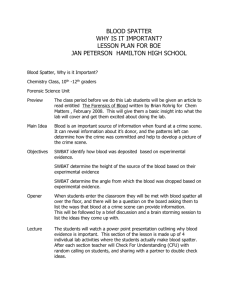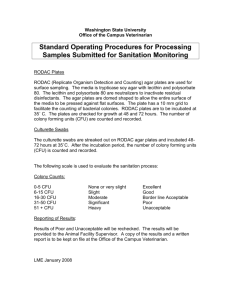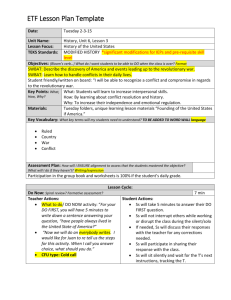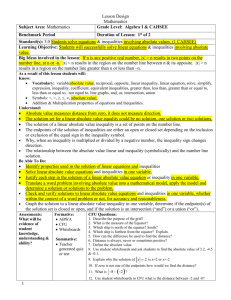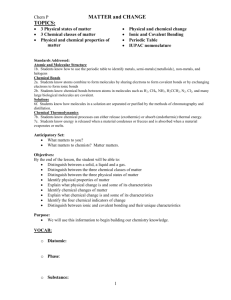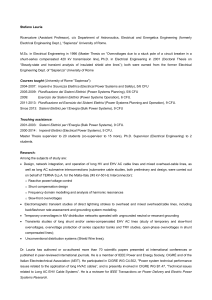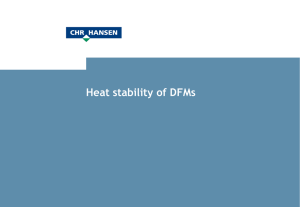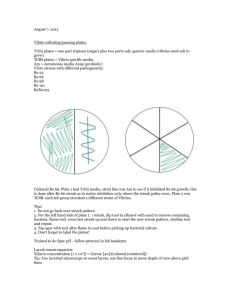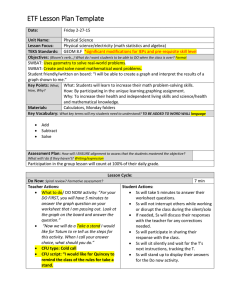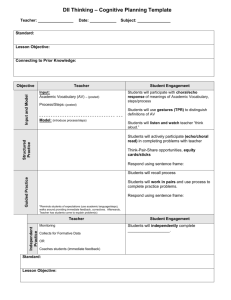Big Ideas involved in the lesson: Linear Combination Method
advertisement
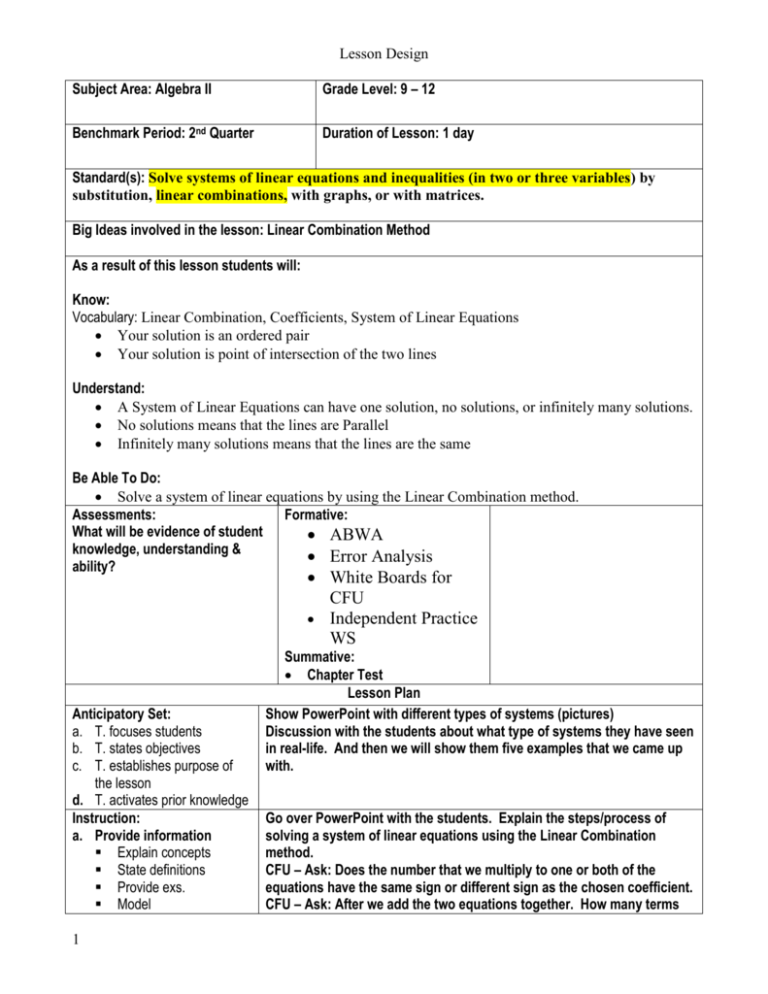
Lesson Design Subject Area: Algebra II Grade Level: 9 – 12 Benchmark Period: 2nd Quarter Duration of Lesson: 1 day Standard(s): Solve systems of linear equations and inequalities (in two or three variables) by substitution, linear combinations, with graphs, or with matrices. Big Ideas involved in the lesson: Linear Combination Method As a result of this lesson students will: Know: Vocabulary: Linear Combination, Coefficients, System of Linear Equations Your solution is an ordered pair Your solution is point of intersection of the two lines Understand: A System of Linear Equations can have one solution, no solutions, or infinitely many solutions. No solutions means that the lines are Parallel Infinitely many solutions means that the lines are the same Be Able To Do: Solve a system of linear equations by using the Linear Combination method. Assessments: Formative: What will be evidence of student ABWA knowledge, understanding & Error Analysis ability? White Boards for CFU Independent Practice WS Anticipatory Set: a. T. focuses students b. T. states objectives c. T. establishes purpose of the lesson d. T. activates prior knowledge Instruction: a. Provide information Explain concepts State definitions Provide exs. Model 1 Summative: Chapter Test Lesson Plan Show PowerPoint with different types of systems (pictures) Discussion with the students about what type of systems they have seen in real-life. And then we will show them five examples that we came up with. Go over PowerPoint with the students. Explain the steps/process of solving a system of linear equations using the Linear Combination method. CFU – Ask: Does the number that we multiply to one or both of the equations have the same sign or different sign as the chosen coefficient. CFU – Ask: After we add the two equations together. How many terms Lesson Design b. Check for Understanding Pose key questions Ask students to explain concepts, definitions, attributes in their own words Have students discriminate between examples and nonexamples Encourage students generate their own examples Use participation Guided Practice: a. Initiate practice activities under direct teacher supervision – T. works problem step-by-step along w/students at the same time b. Elicit overt responses from students that demonstrate behavior in objectives c. T. slowly releases student to do more work on their own (semi-independent) d. Check for understanding that students were correct at each step e. Provide specific knowledge of results f. Provide close monitoring What opportunities will students have to read, write, listen & speak about mathematics? Closure: a. Students prove that they know how to do the work b. T. verifies that students can describe the what and why of the work c. Have each student perform behavior Independent Practice: a. Have students continue to practice on their own b. Students do work by themselves with 80% accuracy c. Provide effective, timely 2 will we have. Show the graphic organizer. And model how to use the graphic organizer to solve the next two examples. CFU – What variable are we going to eliminate? CFU – What will we multiply the first equation by? The second? CFU – Which variable will be left over? CFU – How did you solve for the left over variable? CFU – Does it matter which original equation we use to substitute into? Students will use the whiteboards and their graphic organizers to solve the next examples. CFU – What variable are we going to eliminate? CFU – What will we multiply the first equation by? The second? CFU – Which variable will be left over? CFU – How did you solve for the left over variable? CFU – Does it matter which original equation we use to substitute into? They are going to read word problems, respond to CFU questions, and listen to teacher modeling method. Discuss with students which method they find easier between graphing in order to solve a system of linear equations or using the Linear Combination method in order to solve a system of Linear Equation. Students will be asked to explain the process of solving a system of linear equations with the linear combination method in writing. Worksheet Lesson Design feedback Resources: materials needed to complete the lesson 3 PowerPoint Solving Linear Systems Algebraically Whiteboards Worksheet Graphic Organizer
